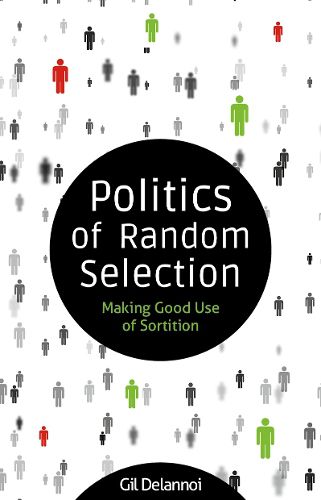Readings Newsletter
Become a Readings Member to make your shopping experience even easier.
Sign in or sign up for free!
You’re not far away from qualifying for FREE standard shipping within Australia
You’ve qualified for FREE standard shipping within Australia
The cart is loading…






This title is printed to order. This book may have been self-published. If so, we cannot guarantee the quality of the content. In the main most books will have gone through the editing process however some may not. We therefore suggest that you be aware of this before ordering this book. If in doubt check either the author or publisher’s details as we are unable to accept any returns unless they are faulty. Please contact us if you have any questions.
What should you do when you have decided to use the drawing of lots in a procedure? What practical questions arise? What options are available? What will the details be? What advantages and disadvantages should we expect from each option? What are the risks to know and the precautions to take?
The literature on sortition consists of three main genres: monographs, arguments for and against, and history of the procedure in one or more dimensions. This book stands a little apart from this framework. Its method is largely deductive and theoretical in reasoning. It has a practical purpose which is aimed at specialists as well as naive users and interested parties: precise enough to satisfy an informed public and simple enough to be accessible to citizens and practitioners.
Gil Delannoi begins with a general theory of political procedures and its relations with the typology of political regimes. Sortitive democracy is also studied as a third type distinct from the representative and direct types. Sortition is analysed through its main uses, effects, and objectives. Several detailed potential uses are proposed to political actors at the end of the book.
Treating procedures like delicate flowers or rare birds is far from superfluous. To forget this aspect is to stick to generalities, to ignore crucial details.
$9.00 standard shipping within Australia
FREE standard shipping within Australia for orders over $100.00
Express & International shipping calculated at checkout
This title is printed to order. This book may have been self-published. If so, we cannot guarantee the quality of the content. In the main most books will have gone through the editing process however some may not. We therefore suggest that you be aware of this before ordering this book. If in doubt check either the author or publisher’s details as we are unable to accept any returns unless they are faulty. Please contact us if you have any questions.
What should you do when you have decided to use the drawing of lots in a procedure? What practical questions arise? What options are available? What will the details be? What advantages and disadvantages should we expect from each option? What are the risks to know and the precautions to take?
The literature on sortition consists of three main genres: monographs, arguments for and against, and history of the procedure in one or more dimensions. This book stands a little apart from this framework. Its method is largely deductive and theoretical in reasoning. It has a practical purpose which is aimed at specialists as well as naive users and interested parties: precise enough to satisfy an informed public and simple enough to be accessible to citizens and practitioners.
Gil Delannoi begins with a general theory of political procedures and its relations with the typology of political regimes. Sortitive democracy is also studied as a third type distinct from the representative and direct types. Sortition is analysed through its main uses, effects, and objectives. Several detailed potential uses are proposed to political actors at the end of the book.
Treating procedures like delicate flowers or rare birds is far from superfluous. To forget this aspect is to stick to generalities, to ignore crucial details.